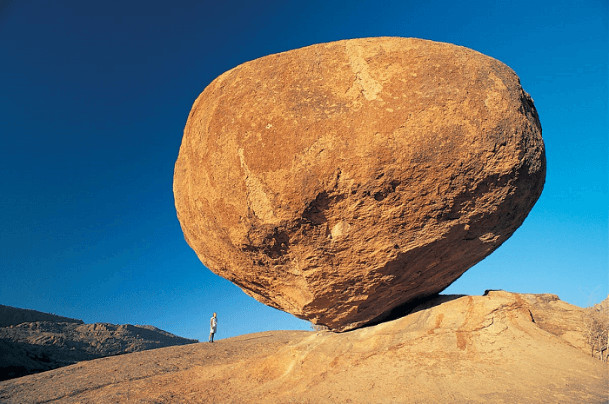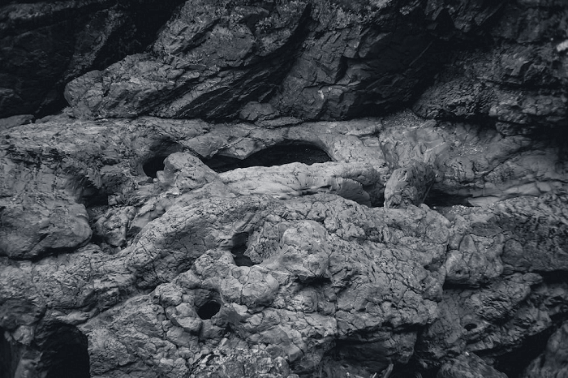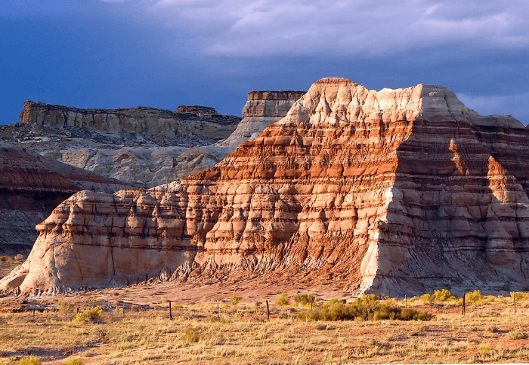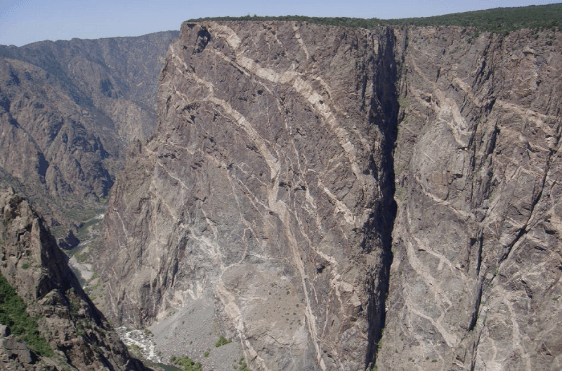Rock DefinitionA rock is a naturally occurring material made up of hard crystals of various minerals. Rock gives the planet a sturdy structure. The crust of the Earth and the majority of its interior are made of rocks. Natural rock formation occurs when micro grains of various minerals are compressed by external pressure. The grains' size, arrangement, and shape form the texture of rock. Rocks and minerals are used in various products, such as cosmetics, automobiles, construction, and appliances. 
Types of RockRock is the naturally produced solid mass or a combination of minerals or mineraloid materials. It is divided into groups based on the minerals present in it. In nature, there are numerous types of rocks, and the three main types of rocks are:
1. Igneous Rocks
Igneous rocks are generated when magma or lava cools down and solidifies. These rocks are probably created during volcanic explosions. Its examples are diabase, diorite, gabbro, granite, pegmatite, and peridotite. Types of igneous rock texture:
Types of igneous rocks: 1. Intrusive igneous rocks Intrusive igneous rocks crystallize below the Earth's surface. Its examples include pegmatite, granite, and diorite. 2. Extrusive igneous rock Extrusive igneous rock, commonly called volcanic rock, is created when molten lava cools on the surface of the Earth. Its examples include basalt, tuff, and pumice. Examples of igneous rocks with characteristics
2. Sedimentary rocks
Sedimentary rocks are formed when minerals and rock fragments settle out of water or air. It is formed by accumulating and solidifying biological waste, such as leaves, roots, and other plant waste. Common sedimentary rocks include limestone, clay, sandstone, chalk, and shale. Types of sedimentary rocks: 1. Organic sedimentary rocks Accumulation and solidification of organic residues, such as leaves, roots, and other plant or animal material, formed the organic sedimentary rocks. 2. Clastic sedimentary rocks Clastic sedimentary rocks are generated from mechanical weathering waste. 3. Chemical sedimentary rocks Chemical sedimentary rocks form when water moves through rock and dissolves some minerals. E.g., chert, limestone, banded iron formation, and evaporites. Sedimentary rock applications:
3. Metamorphic Rocks
Metamorphic rocks are formed when existing rocks undergo a physical or chemical change at a high temperature. Metamorphic rocks can originate from igneous, sedimentary, or existing metamorphic rocks. New minerals that develop during metamorphism differ from the original minerals in size, shape, and orientation. Types of metamorphic rocks: 1. Foliated metamorphic rocks Foliation is the term used to describe a metamorphic rock with strata of aligned minerals. Foliated rocks form a platy or sheet-like structure that indicates the direction of pressure. Foliated metamorphic rocks include phyllite and gneiss. The rock is organized in layers & looks like stripes. The layers in rock generate under high pressure. Examples of foliated metamorphic rock
2. Non-foliated rocks Non-foliated rocks do not have layered or banded appearances. Examples of non-foliated rocks are hornfels, marble, skarn, quartzite, and novaculite. Applications of metamorphic rock:
The Transformation of Sedimentary into Metamorphic Rock
The Transformation of Igneous into Metamorphic Rock
Commonly Used Building RocksThe most frequently used building rocks include marble, quartzite, granite, serpentine, limestone, chalk, sandstone, caliche, basalt and trap, slate, laterite, and gneiss. 1. Granite Granite is an igneous rock created when magma solidifies at a significant depth below the Earth's surface. It is durable and hard. Granite's color depends on the quantity of feldspar present in it. It is easily polishable. Large engineering projects like the construction of a bridge, dams, and offshore structures utilize granite as a building material. It is also utilized to build walls, floors, staircases, and other structures. 2. Basalt and trap Basalt and trap are utilized as pavement material, cement aggregate, railroad ballast, etc. Basalt and trap of red and yellow color are utilized to create an architectural ornament. 3. Syenite Syenite has a coarse-grained structure, and its crushing strength ranges from 90 to 150 MPa. Although it comes in a variety of colors, most of them are light. Crushed syenite is regularly utilized to produce concrete. It is also utilized in the construction of exterior building walls. 4. Limestone The accumulation of weathering particles forms limestone. It has significant amounts of calcium carbonate. Limestone is utilized to make cement and lime. It is also utilized for roofing, flooring, etc. 5. Chalk A sedimentary rock called chalk contains only pure lime. It is highly lightweight and easily turned into powder. It is utilized to make lime putty. 6. Sandstone Sandstone contains various minerals, including quartz, feldspar, and silica. It is used to construct columns, ornamental carvings, roofing, paving, and other structures. 7. Caliche Caliche is commonly known as kankar. In the construction of pavements, kankar is utilized as aggregate. It's utilized to make hydraulic lime. 8. Marble Marble is generated when limestone is exposed to extreme heat and pressure. Marble is a hard material. It comes in various colors and is polishable. Marble is utilized for steps, flooring, etc. As it's simple to carve into the desired shape, it is utilized in decorative and ornamental works on structures. 9. Slate Slate has a foliated texture and is black. Slate is used for floors, roofs, walls, damp-proofing courses, etc. 10. Quartzite Quartzite is utilized as cement and road aggregate. It is utilized to construct retaining walls, rubble masonry, stone pitching, etc. 11. Laterite The structure of laterite is porous and spongy. Due to its softness and workability, laterite can be easily quarried. Moorum is produced when laterite breaks down, frequently used in road construction. Laterite is utilized in the construction of pavements and masonry. 12. Gneiss Gneiss is another metamorphic rock created due to the transformation of granite. It has a foliated structure. Crushed gneiss is used for making pavement, building rough stones, pitching stones, etc. Rocks in India1. Rocks of the archaean system It was formed during the pre-Cambrian era when the Earth's crust's top layer cooled and solidified. These rocks contain metallic and non-metallic minerals, including mica, asbestos, graphite, lead, zinc, gold, silver, tungsten, copper, manganese, and bauxite. 2. Rocks of dharwar system It was formed as a consequence of the transformation of Archean rock sediments. These rocks can be found in Karnataka, Andhra Pradesh, Tamil Nadu, the Himalayas, Delhi, Madhya Pradesh, Orissa, Aravallis, and some regions of Jharkhand and Rajasthan. These rocks hold significant economic value. These rocks contain all notable metallic minerals such as iron, gold, manganese, etc. 3. Rocks of cuddapah system It was formed due to the erosion and accumulation of Archean and Aharwar rocks, which took place between 140 and 600 million years ago. These rocks contain minerals like cobalt, manganese, copper, iron, nickel, etc. 4. Rocks of the vindhyan system It was formed by the deposition of sand in river valleys & shallow ocean sediment. 5. Rocks of the tertiary system It was formed between the Eocene and Pliocene eras. The rocks of the tertiary system can be found in Kashmir, the Great Plains' Bhangar, and Khadar. Difference Between Rock and Stone
Difference Between Sedimentary Rock, Igneous Rock, and Metamorphic Rock
Next TopicMechanical Energy Definition
|
 For Videos Join Our Youtube Channel: Join Now
For Videos Join Our Youtube Channel: Join Now
Feedback
- Send your Feedback to [email protected]
Help Others, Please Share










